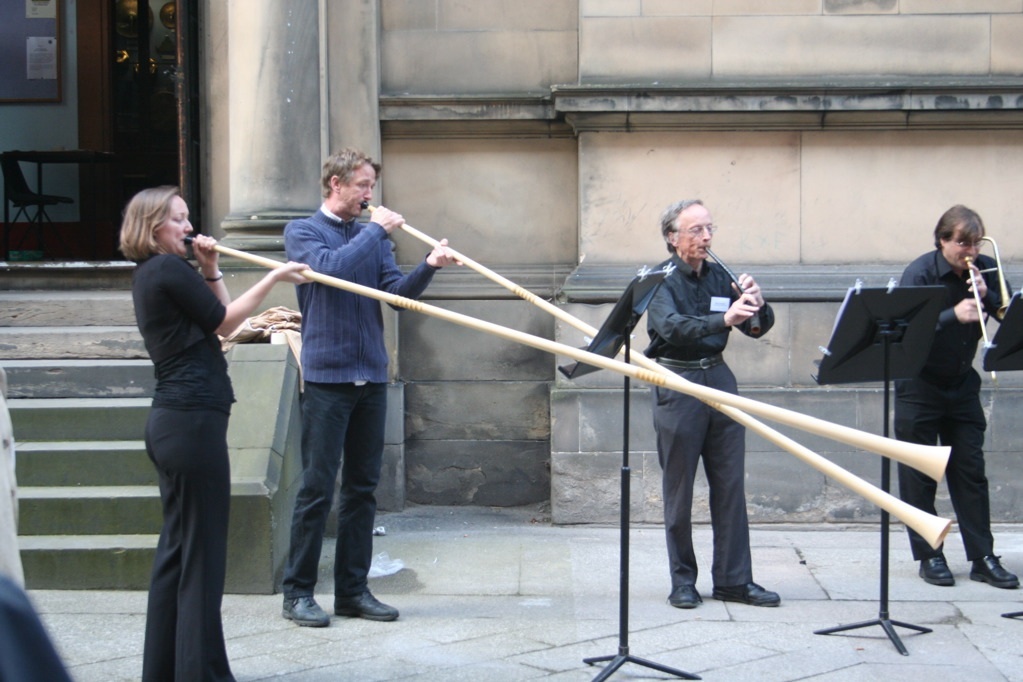|
Lituus
In a colloquium at the Schola Cantorum Basiliensis, January 2009, Mike Diprose, Balthasar Streiff and Anselm Hartinger offered a solution to the enigma of O Jesu Christ, meins Lebens Licht BWV 118: What did JS Bach mean when he wrote "lituus"?
Click HERE for links to a sound file and other websites about this fascinating reconstruction project and how it involved scientists at the University of Edinburgh.

March 2010 De Swaen performed Bach's motet, with two of these Litui.
In the same programme we performed a new composition for Lituus by Balthasar Streiff, commissioned by De Swaen.
Why the wooden lituus?
by Mike Diprose
 Many mysteries surround JS Bach’s Trauermotet, O Jesu Christ, meins Lebens Licht, (BWV 118). Only composition scores of both versions are extant - the first version with a watermark from 1736/37; the second circa 1740. Neither autograph scores nor parts survive. Both versions specify lituus I & lituus II. Many mysteries surround JS Bach’s Trauermotet, O Jesu Christ, meins Lebens Licht, (BWV 118). Only composition scores of both versions are extant - the first version with a watermark from 1736/37; the second circa 1740. Neither autograph scores nor parts survive. Both versions specify lituus I & lituus II.
It is not clear what is meant by the word lituus, which was originally a Etruscan cavalry instrument from Roman times. Lexica from the early 18th century give various definitions, ranging from trumpet to shawm. The parts for lituus in BWV118 can be played on a “natural” instrument: i.e. one limited to the harmonic series (when pitched in Bb - about 2.65 metres long). Later in the 18th century, the word lituus appears on many other scores (mainly from Bohemia) as a general word for “brass instrument”- horn or (possibly coiled) trumpet. So, mystery solved? Many people assume that lituus simply means “horn”.
Maybe it’s no so simple for this piece: BWV 118 is a Trauermotet – funeral music. The cornetto and trombones also specified in the first version had a strong symbolic association with mourning, whereas trumpets and horns represent noble celebration - very inappropriate at a funeral and also, because of and Edict* restricting their use, illegal at the time (there are no trumpet or horn parts in Bach’s Passions, for instance). Baroque horn and trumpet parts tend to be in short, dramatic bursts. The lituus parts in BWV 118 are unique in character, with long, lyrical phrases that, when played on horns or trumpets, don’t really blend in ensemble as well as they could.
|